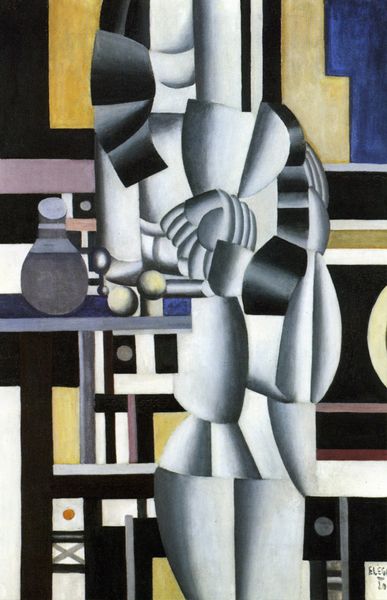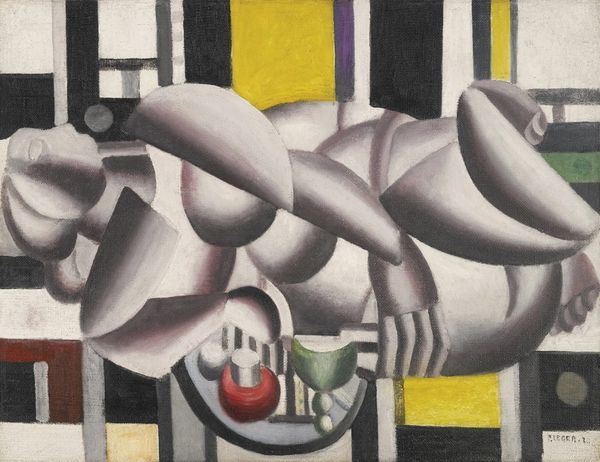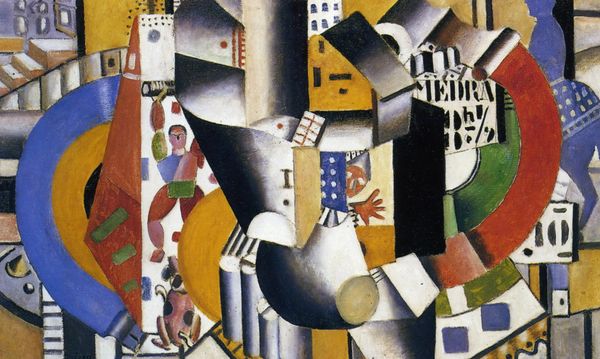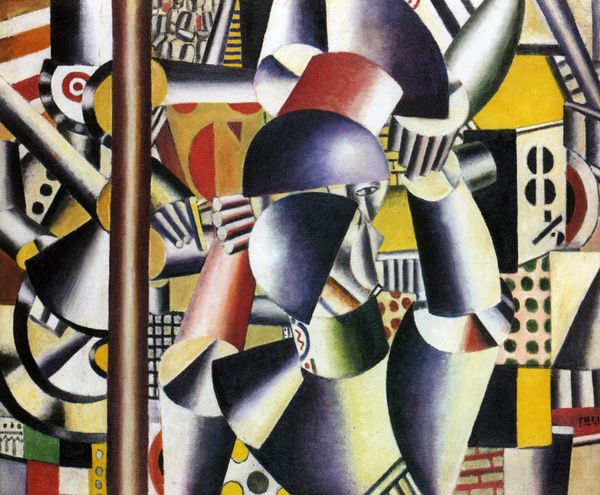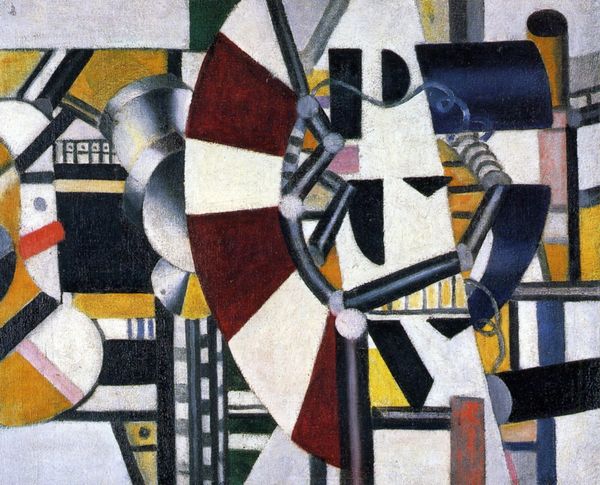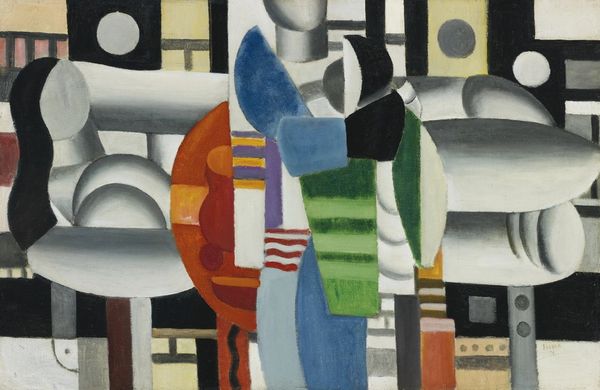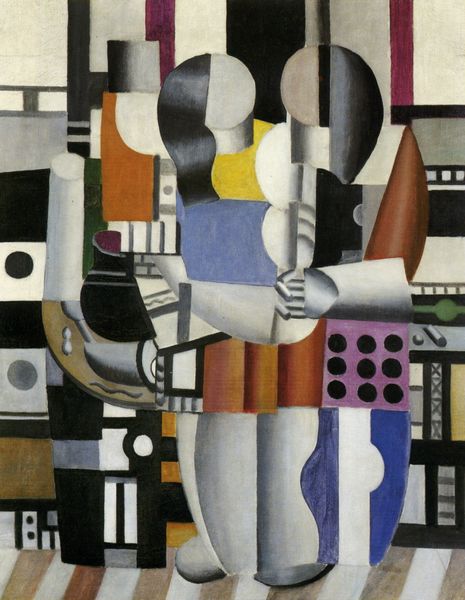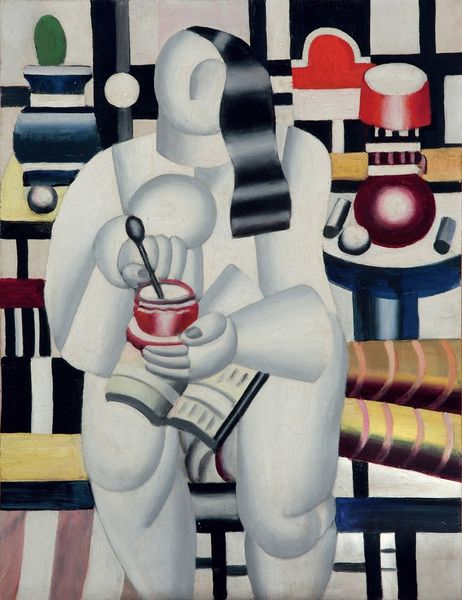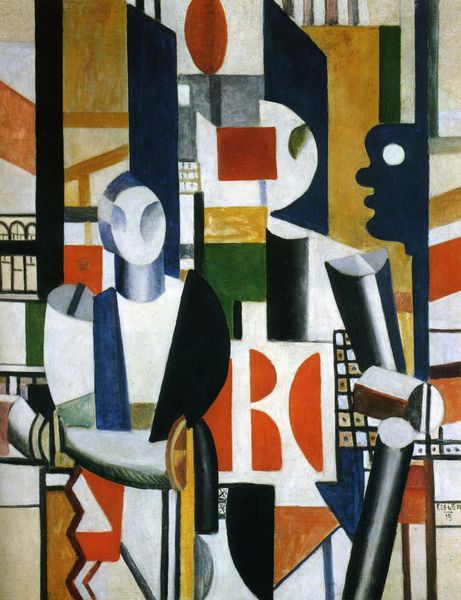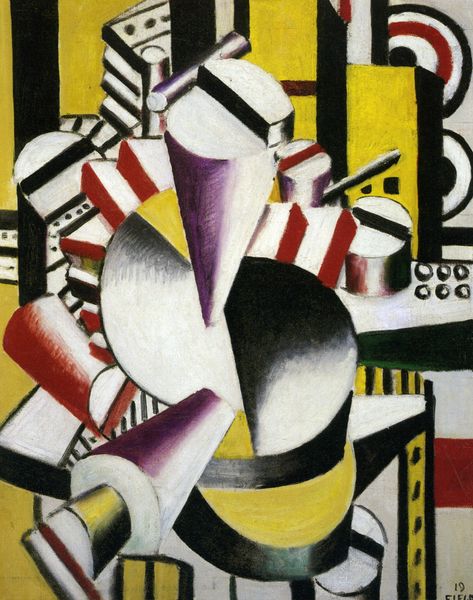
painting, oil-paint
#
portrait
#
cubism
#
painting
#
oil-paint
#
painted
#
form
#
neo expressionist
#
geometric
#
abstraction
#
modernism
Copyright: Public domain US
Curator: Standing before us is Fernand Léger’s 1920 painting, "Two Women and Still Life, 1st State," rendered in oil paint. Editor: My initial reaction? It’s like looking at the blueprints of a dream—blocky, bold, yet strangely… vulnerable. It has this machine-age confidence with just the faintest crack showing through. Curator: Absolutely, the composition reflects Léger's fascination with machinery and modern life, aligning with the principles of Cubism, where form is fragmented and reassembled. This interest isn't just aesthetic; it's socio-political. Léger believed that art should reflect the energy and dynamism of the industrial age, becoming accessible and relevant to everyone. Editor: And he presents it through these figures, or fragmented ideas of figures… What's particularly moving is how the abstraction doesn't entirely erase the humanity. There's a definite tenderness in the rendering of the still life objects—a bowl, a goblet, even the simple act of offering. Does that contrast play into Léger's societal ideas, you think? The rigid and organic balancing each other out? Curator: I believe you're onto something. After the trauma of World War I, Léger, like many artists, sought a new visual language to represent a world irrevocably changed. These geometric forms become almost like archetypes. Universal forms freed from specificity to speak to a wider audience, as if rebuilding civilization through simplified design. Editor: That idea of rebuilding rings so true. It’s not just about aesthetics; it’s like Léger's saying, "We can piece ourselves back together, stronger, maybe stranger, but definitely with more intention.” He took a wrecking ball to tradition only to use the pieces to create something both familiar and entirely new. The shapes evoke human figures but are also strangely architectural... a kind of optimistic urban renewal, isn't it? Curator: A very poetic reading! It’s also worthwhile to remember how Léger’s artistic and political stance aimed to position art as an agent of collective empowerment during times of rapid social changes and political polarization. It speaks volumes to this painting's persistent resonance even today. Editor: Ultimately, it feels as though Léger wasn't just painting bodies or objects but presenting us with building blocks. Ideas, perhaps, with which we, too, can reconstruct our perceptions and understanding of the world. A daunting, exciting invitation.
Comments
No comments
Be the first to comment and join the conversation on the ultimate creative platform.

